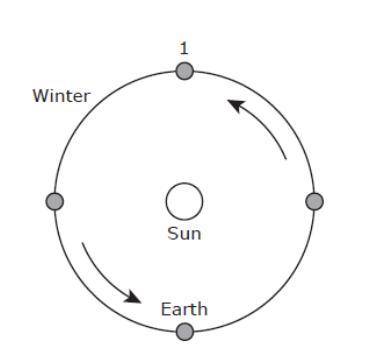
Biology, 12.12.2020 16:30, ryliepeloquinf
Students in a science class in Marfa, Texas made a poster with a diagram to represent a seasonal change in the Northern Hemisphere.
Which statement best describes conditions for Earth at Position 1 in the diagram?
The Northern Hemisphere has the fewest hours of daylight, and the North Pole is tilted away from the sun.
⊝
There are an equal number of hours of daylight and nighttime in the Northern Hemisphere because Earth’s axis is not tilted in this position.
⊝
The Northern Hemisphere has the fewest hours of daylight, and Earth’s axis does not tilt at this position.
⊝
There are an equal number of hours of daylight and nighttime in the Northern Hemisphere, and the North Pole is tilted away from the sun.
⊝


Answers: 1
Other questions on the subject: Biology


Biology, 22.06.2019 14:50, jennychrin95
The ultimate purpose of respiration: a. inhale 02 and exhale co2 b. place oxygen in the lungs c. place oxygen in the blood d. deliver oxygen to every blood cell
Answers: 3

Biology, 22.06.2019 15:30, gunnatvinson
Some plants have reproductive structures that them reproduce using natural forces or animals. how does the reproductive structure shown here ensure the reproductive success of plants?
Answers: 1

Biology, 22.06.2019 16:00, pandamaknae2003
Prior knowledge can be gained from personal experience and a) forming well-developed hypotheses. b) listening to opinions of other people on a topic. c) researching previous experiments and results on a topic. eliminate d) no other methods. it can only be gained by personal experience.
Answers: 1
Do you know the correct answer?
Students in a science class in Marfa, Texas made a poster with a diagram to represent a seasonal cha...
Questions in other subjects:

Mathematics, 13.01.2021 01:30



Mathematics, 13.01.2021 01:30


Social Studies, 13.01.2021 01:30



Chemistry, 13.01.2021 01:30

Mathematics, 13.01.2021 01:30






